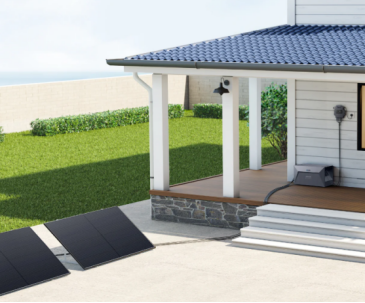Integrating solar power into your smart home system is a great way to enhance energy efficiency, reduce utility costs, and promote sustainable living. Combining solar energy with smart home technology allows for seamless management and optimization of your energy usage. This article outlines the key steps to effectively integrate solar power into your smart home system.

Steps to Integrate Solar Power into Your Smart Home Hub
Please follow the steps below to integrate solar power with your smart home, maximizing the benefits of your solar power system and creating a more sustainable and cost-effective home environment.
Assessing Your Energy Needs and Solar Potential
The first step in integrating solar power into your smart home system is to assess your energy needs and solar potential. Review your electricity bills to determine your average energy consumption. Next, evaluate your property’s solar potential by considering factors like roof orientation, shading, and available space for solar panels. Understanding your energy needs and solar potential will guide the design and size of your solar system, ensuring it meets your requirements.
Selecting the Right Solar Panels and Inverter
Choosing the appropriate solar panels and inverter is crucial for efficient solar power generation and integration. Monocrystalline panels are more high-efficiency, making them ideal for residential installations. Polycrystalline panels are more affordable but slightly less efficient. The inverter is also a key component that converts the direct current into alternating current used by household appliances. Opt for a smart inverter that offers monitoring capabilities and seamless integration with your smart home system.
Connecting to a Smart Home Hub
A smart home hub acts as the central point for connecting and controlling all your smart devices, including your solar power system. Platforms like Google Home, Amazon Alexa, and Apple HomeKit offer compatibility with various smart devices and provide a user-friendly interface for managing your home. By integrating your solar inverter with a smart home hub, you can monitor energy production, consumption, and storage in real-time.
Implementing Smart Energy Management Systems
Smart energy management systems (EMS) are essential for optimizing the use of solar power in your home. These systems track energy production and consumption, providing insights and recommendations for efficient energy use. They can automate energy-saving measures, such as adjusting thermostats, dimming lights, and scheduling appliance usage based on solar production.
Integrating Battery Storage
Battery storage systems are crucial for making the most of your solar power system. Integrating battery storage with your smart home system like the whole complete set of balcony power plant 800 watt systems allows for efficient energy management and greater energy independence. Smart batteries can be monitored and controlled through your smart home hub, enabling you to optimize charging and discharging based on energy needs and solar production.

Monitoring and Maintenance
Regular monitoring and maintenance are essential to ensure the optimal performance of your integrated solar and smart home system. Use the monitoring tools provided by your smart inverter and EMS to track energy production, consumption, and battery status. Regularly clean your solar panels and inspect the system for any signs of wear or damage. Proper maintenance ensures your system operates efficiently and prolongs its lifespan.
Conclusion
Integrating solar power into your smart home system provides numerous benefits, including enhanced energy efficiency, reduced utility costs, and increased sustainability. By assessing your energy needs, selecting the right components, connecting to a smart home hub, etc, you can create a seamless and efficient solar-powered smart home. So embrace this innovative approach to home energy management and enjoy the long-term benefits of a sustainable and cost-effective living environment.
